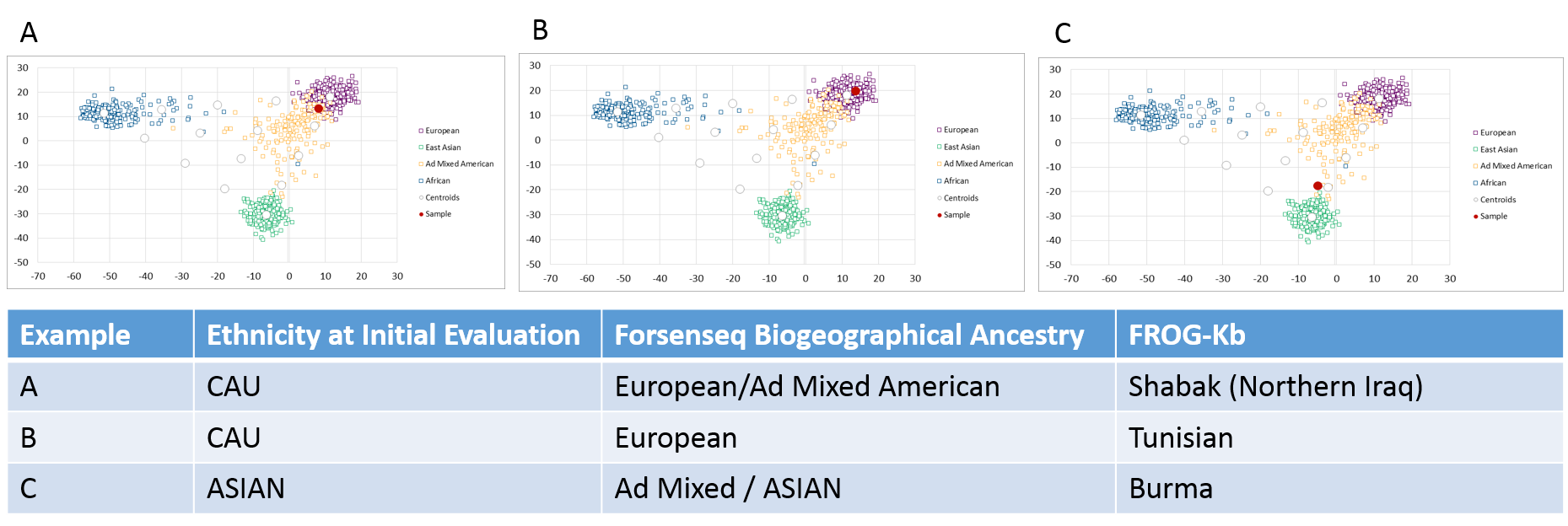Use of Ancestral Genetic SNP Phenotyping to Define Genotypic Ethnicity in Solid Organ Transplant Patients
P. Jindra, T. Tu, N. D'Silva, C. T. Stewart, J. Magana, N. Chitnis
Surgery, Baylor College of Medicine, Houston, TX
Meeting: 2022 American Transplant Congress
Abstract number: 452
Keywords: Ethics, Gene polymorphism, Genomic markers, Outcome
Topic: Clinical Science » Ethics » 23 - Non-Organ Specific: Economics & Ethics
Session Information
Session Name: Psychosocial and Treatment Adherence
Session Type: Rapid Fire Oral Abstract
Date: Tuesday, June 7, 2022
Session Time: 3:30pm-5:00pm
 Presentation Time: 4:40pm-4:50pm
Presentation Time: 4:40pm-4:50pm
Location: Hynes Room 311
*Purpose: Transplantation research has mainly categorized ethnicity into four main groups African American, Caucasian, Hispanic, and Asian Pacific Islander. Our world has increased in admixure leading to the question of whether these general ethnic classifications are able to truly define a group of people from which clinical correlations can be made. The aim of this study was to compare differences in how solid organ transplant recipients classify themselves based on their perspective ethnicity to a SNP based biogeographical ancestry genotype profile.
*Methods: Ethnicity was determined by recipients at their initial medical evaluation N=30. At this time, DNA was isolated from a yellow top ACD tube. All procedures followed the manufacturer’s instructions (Verogen, San Diego, CA, USA). All reagents for this assay were included in the Verogen ForenSeq™ DNA Signature Prep Kit unless otherwise noted. Briefly, The DNA primer mix B was used for ancestry determination. Primer pairs for 56 ancestral SNPs and 22 phenotypic SNPs were used. The gDNA was amplified and tagged using an oligonucleotide primer mix with regions specific to DNA sequences upstream and downstream of SNPs. In-depth analysis of the patient’s ancestry SNPs was performed using the FROG-kb ancestry database. FROG-kb has SNP profiles on various population regions to identify which ethnicity is most associated with a sample.
*Results: We observed a significant percentage of recipients identified themselves as Caucasian, however based on the ancestry screening 40% (N=12) were correlated with non-Cauasian populations. They were categorized using biogeophical ancestry SNPs as either African American, Hispanic Admixture or Asian.
In Figure 1 examples A-B we noted patients identifying as Cauasian did show relatedness to European ancestry yet analysis of 161 DNA profiles classified them with a genetic likehood ratio to populations in Northern Iraq and Tunisian. Additionally in example C we found a general classification of Asian could be further defined to a Burmese population. These data show that genetic ancestry has the ability to better characterize a recipients ethnic background which can be used for generating clinical outcomes research.
*Conclusions: Physical diversity does not always correlate with DNA and one cannot draw conclusions of genetic relationships based on appearance. Patient’s maybe defining themselves strongly by physical appearance can be misclassified at the genomic level. If we are to enter into a field of personalized medicine the person specifically needs to be more well characterized.
To cite this abstract in AMA style:
Jindra P, Tu T, D'Silva N, Stewart CT, Magana J, Chitnis N. Use of Ancestral Genetic SNP Phenotyping to Define Genotypic Ethnicity in Solid Organ Transplant Patients [abstract]. Am J Transplant. 2022; 22 (suppl 3). https://atcmeetingabstracts.com/abstract/use-of-ancestral-genetic-snp-phenotyping-to-define-genotypic-ethnicity-in-solid-organ-transplant-patients/. Accessed December 14, 2025.« Back to 2022 American Transplant Congress

